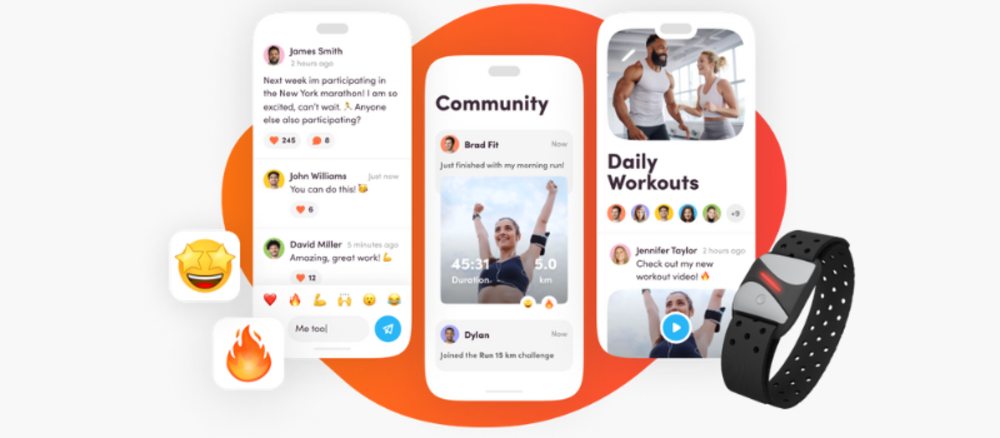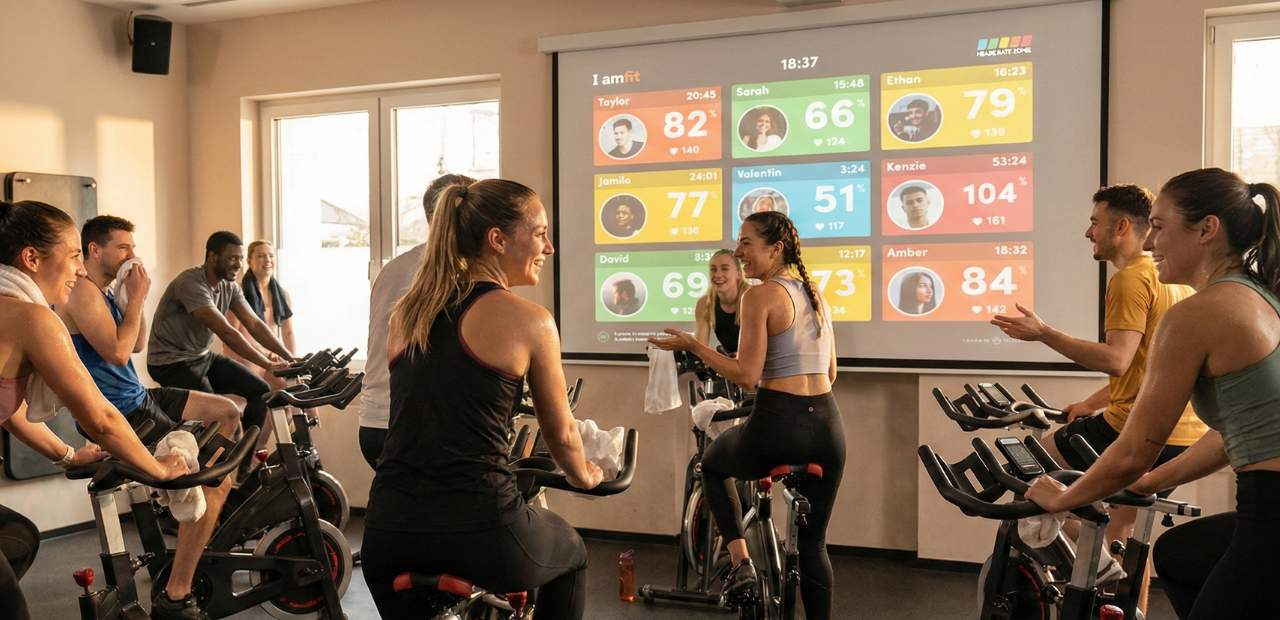People walk in. They ask about prices. They seem interested. But somehow… they don’t sign up.
If you run a gym, you’ve seen this happen. Too often.
Selling gym memberships isn’t just about getting more foot traffic or posting on social media. It’s about having a process that turns interest into actual sign-ups: a process that works for your fitness facility, your team, and your local community.
The reality is: many gym owners lose membership sales not because they lack effort, but because they’re missing a clear sales strategy. Maybe the sales pitch isn’t landing. Maybe the follow-up falls flat. Or maybe potential members just aren’t sure if your gym fits their fitness goals.
This blog isn’t here to throw more ideas at you. It’s here to help you sell more gym memberships with a five-part system designed for real fitness businesses, whether you run a small neighborhood gym or a busy fitness center.
We’ll break down how to:
- Identify what’s blocking your membership sales
- Improve how you present value to prospective members
- Automate follow-ups and boost conversions without chasing people
- Apply strategies that increase gym membership sales — like bundles, referrals, and flexible offers
- Track what actually works using tools you already have or can easily add
If you’re ready to stop guessing and start boosting gym membership sales with practical, proven tactics, this guide is for you.
Let’s begin.
1. Diagnose What’s Stopping Sales

Before you fix anything, you need to know what’s actually broken.
If you’re not selling enough gym memberships, the problem often isn’t visibility: it’s conversion. People are showing interest, but something in your sales process is making them hesitate, delay, or disappear.
According to studies within the fitness industry, the average lead-to-member conversion rate for gyms sits around 40–45%. That means more than half of the people who show interest never join and if you’re below that benchmark, there’s likely room for immediate improvement.
Start with the basics: where are people dropping off?
To start, you don’t need complex systems to spot the cracks in your sales process. Just ask yourself:
- Are people visiting but not signing up after the tour?
- Are they doing a trial class… and never coming back?
- Are they showing interest online or via message — and going silent?
These are signs your gym sales process needs tuning. Not more effort — better structure.
And while you don’t need advanced tools to start diagnosing your sales flow, having a clear system to track and follow up on leads can make a huge difference. For example, Virtuagym’s lead management tool helps you organize contacts, automate reminders, and stay on top of every opportunity — without needing to be a tech expert.
To make this easier, consider mapping your full customer journey: from first contact to long-term engagement. It helps you spot where potential members drop off and what needs fixing first. If you’re not sure how to build one, this blog breaks it down step-by-step: Customer Journey Map for Fitness .
Common blockers we see in the fitness industry

Once you’ve started tracking your leads and sales process, you’ll likely see patterns.
These are the patterns we see over and over again across the fitness industry:
Slow or sloppy follow-up
A potential member walks in. Shows interest. Leaves. And then… silence.
No message, no email, no second contact. Just another missed opportunity.
In this industry, timing matters. If you don’t follow up fast (ideally within 24 hours) you lose them. Most gym owners don’t just need more leads. They need to stop letting hot prospects go cold. If you want to increase gym membership sales, your sales process needs to move faster than your competition.
No lead nurturing
Not every potential gym member is ready to commit after one visit. But if you let them walk away without staying in touch, you’re out of the game.
No follow-up emails. No personal training session offer. No class invite. They forget you. You forget them. And someone else earns their membership.
Generic, forgettable sales pitches
“This is our fitness center. That’s the cardio zone. Here’s our price list.”
That’s not a pitch. That’s a walk-through.
Selling gym memberships takes more than a facility tour. You need a sales pitch built around fitness goals, outcomes, and emotions.
When your team talks like a flyer, potential and existing members tune out.
Wrong channel, wrong tone
Sometimes it’s not what you’re offering, it’s how and where you’re offering it.
If your outreach relies mainly on printed flyers, mass emails, or social posts that get buried, your message might not be reaching the people who would actually join.
Many potential gym members today respond better to WhatsApp messages, direct DMs, or short, targeted texts, especially when it comes to things like referral programs, membership discounts, or booking personal training sessions.
The takeaway? Your communication style should reflect how your members interact in daily life. The goal isn’t to overhaul everything, just to match your outreach with how people prefer to connect.
No trust, no sale
Even the best fitness routines won’t sell if people don’t trust your offer. They want confidence. Clarity. Simplicity. Not noise.
If your front desk feels scattered, your sales staff are vague, or your offer sounds like “just another gym,” the result is always the same: no thank you.
Staff not built for sales
This is a big one.
Too often, no one owns the sales process. Everyone’s “just helping.” No scripts, no sales strategy, no follow-up protocol.
Worse — they talk too much. They tell instead of ask. They explain instead of listen.
Truth is, the best gym membership sales don’t come from smooth talkers. They come from listeners. From teams trained to guide a sales conversation, not dominate it.
Now, we’re assuming you’re already getting some traffic through the door or interest online. But if your challenge starts earlier, if people aren’t even reaching out in the first place, this guide won’t solve it alone. In that case, check out this blog on how to attract new customers to your gym . It walks you through practical ways to get more people to notice and visit your gym in the first place.
How to spot these gaps in your gym

Spend a week tracking what happens with every potential member:
- Did they sign up after their first visit?
- If not, did anyone follow up — and how?
- What reasons do people give for not joining?
Talk to your team. Read recent messages. Look at reviews. Sometimes the answers are right in front of you.
If you use gym management software, you may already have some of this data: how many people visit, how many convert, and how long it takes. But even if you don’t, just start with a simple notebook or shared file. Track what’s happening.
2. Fix Your Tour and Sales Pitch

Let’s be real: most of the problems gym owners face with membership sales don’t start with marketing, they start with sales.
When we analyzed common blockers in the fitness industry, one theme stood out: poor or inconsistent communication with prospective members. That’s why this step comes first.
Before you try to boost gym membership sales with clever offers or new ad spend, you need to fix how you talk to people, starting with your tour and your sales pitch.
The way you guide a potential member through their first visit: what you say, how you listen, what you offer… can make or break the sale. And when your staff skips this step, or does it wrong, it shows up in your numbers: lower membership sales, fewer sign ups, and frustrated team energy.
What selling gym memberships should actually sound like

You don’t need a script — but you do need structure. A good sales pitch isn’t about listing features. It’s about connecting your membership offer to someone’s real health and fitness goals.
Here’s a simple framework that works across the board:
1. Start with their “why.”
Most prospective members won’t come in with a clear goal. And that’s okay.
You’ll hear:
“I just want to get healthier.”
“I’ve been sitting too much.”
“I know I should be doing something.”
Don’t expect a perfect answer. Instead, help them explore it. Ask:
- “What would ‘feeling healthier’ look like for you?”
- “Is this more about energy, strength, routine — or a mix?”
- “Have you tried any type of fitness before, or is this your first time?”
The point isn’t to get a precise goal. It’s to open up a real sales conversation and show them that you’re listening. That simple moment of understanding builds trust and makes your gym stand out.
2. Reflect what they say and help shape it into something real.
Once they’ve shared something (even if it’s vague), repeat it back in your own words to show you’re listening and gently help them connect the dots.
“So you’re here because you want to feel better and have more energy, but you’re not sure where to start. Totally normal. That’s why we have an intro plan to ease you in.”
This helps turn a vague reason into a more defined starting point. And for someone who’s been putting off joining for months, that kind of clarity feels like relief.
It’s not just good customer service, it’s one of the most powerful ways to increase gym membership sales: helping people see what’s possible with your support.
3. Don’t just list features, explain how they help.
It’s easy to fall into a habit of listing what your gym offers:
“We’ve got treadmills, free weights, group fitness classes, and personal training.”
But most people (especially beginners) don’t know how those things relate to their own goals.
Here’s the fix: group your services into benefits that match the person’s situation or goal.
Example:
“Since you said staying consistent is your biggest challenge, here’s how we’d help with that:
- Our group fitness classes run every evening, so it’s easy to stick to a routine.
- We offer check-ins with a coach every 2 weeks to keep you on track.
- And if you ever miss a session, our app shows you a workout you can do at home.”
Then, and only then, summarize the rest:
“On top of that, you’ll have full gym access, all cardio and strength zones, personal training options, and the recovery area — everything’s included if you want it.”
That way, your gym sounds complete and relevant. You’re not just listing features. You’re showing how your facility supports their fitness journey, from motivation to results.
This approach works whether you’re selling gym memberships to total beginners or experienced members switching from another fitness facility.
4. Offer a clear solution.
At the end of the speech, many gym owners list all their membership types, add-ons, payment plans, and discounts, thinking more options = more chances to convert.
But too much choice leads to hesitation.
Instead, based on what the person told you, recommend one specific plan that matches their situation. For example:
“This plan gives you full gym access, two personal training sessions to get started, and weekly check-ins so you’re not on your own. It’s designed for people who want support and structure in the beginning.”
The key is to make it feel like a recommendation, not a menu. Use phrases like:
- “What I usually suggest for people like you…”
- “This tends to work really well if your goal is consistency.”
- “Most of our current members started with this plan, then adjusted once they felt more confident.”
5. Ask for the sign-up with confidence.
This is where a lot of sales conversations fall apart. The gym owner does the tour, makes a recommendation… and then just waits.
Don’t. Be the one to move the conversation forward.
Try:
- “Want to walk through the next steps now?”
- “Should we get that first session booked while you’re here?”
- “Want me to set you up with a 7-day trial and check in with you mid-week?”
You’re not forcing. You’re guiding.
Think of it like personal training: if someone’s doing a lift wrong, you don’t wait for them to ask, you coach. Selling gym memberships works the same way. You’re leading the person toward something that benefits them.
Done right, this step doesn’t feel salesy. It feels like exceptional customer service.
Rebuild your gym tour: make it real

Here’s where most fitness facilities lose people: the tour.
Too often, the walk-through feels like reading a floor plan. “Here’s the locker room. Here’s the machines. That’s the smoothie bar.” Forgettable. Generic. Flat.
Instead:
- Make it feel personal. If they mentioned stress, show them the quietest corner of your gym. If they want energy, introduce them to the group fitness class vibe.
- Make it interactive. Let them try a machine. Show them how they’d check in or book a personal training session in the app.
- Make it easy to imagine. “This is where you’d start your first workout. We’ll send you a plan based on what you told me today.”
Create urgency without pressure
People delay decisions when there’s no reason to act now. You don’t need to pressure them, but you do need to frame the timing:
- “This offer is valid until Sunday.”
- “We’ve got three PT slots left this week.”
- “This month’s group challenge starts Monday — perfect if you want accountability from day one.”
Urgency is what moves people from “maybe later” to “let’s do this.” It’s one of the most effective gym sales strategies — especially when combined with time-sensitive bundles or membership discounts.
3. Apply Proven Sales Strategies

Once your pitch and tour are solid, you need clear, high-impact sales strategies that convert more prospective members and boost your gym membership sales now.
This step is where gym owners can apply real tactics to sell more gym memberships, not random ideas, but structured strategies that fit your fitness business, your audience, and your team.
Here are six proven ways to increase gym membership sales that actually work across the fitness industry:
Offer a limited-time trial with structure

Free trials alone won’t increase gym memberships unless they’re guided and time-sensitive.
Try:
- 7-day trial with a personal training session
- 3-class intro bundle with onboarding support
- Time-limited sign-up (e.g. “join by Friday and get full gym access + a PT intro”)
These strategies help potential members experience your gym and feel supported, which directly increases the chances of conversion.
Use a program to refer friends

Referrals are one of the most cost-effective ways to boost membership sales. But they only work if the reward is simple and benefits both the current and prospective member.
Try:
- “Refer a friend and you both get one free personal training session.”
- “Bring someone in — if they join, you get 50% off next month.”
- Stack rewards: more referrals = bigger perks
This not only encourages existing members to invite others, it also attracts more members who already trust you via their network.
Create bundled offers

Bundling services makes your membership feel like a deal.
Combine:
- Gym memberships + personal training sessions
- Group fitness classes + nutrition check-ins
- Monthly plan + access to regular fitness challenges
People are more likely to sign up when they see a clear path to progress — especially when the bundle connects to their health and fitness goals.
Offer membership discounts and flexible memberships

Flexibility increases conversions. So do clear, limited-time incentives.
Try:
- Monthly options with no long-term lock-in
- Pay-in-advance plans with 10% off
- “First month €1” deals for new members only
- Corporate packages for local businesses or sports teams
These are simple, effective gym sales strategies that remove friction and help prospective members feel safe committing.
Bonus: Use gym management software to track what offers work best, so you can double down on what brings real gym revenue.
Run low-barrier challenges that create momentum

Not everyone wants to join right away. Some need a nudge. Fitness challenges are a great way to bring in hesitant leads.
Try:
- “21-Day Restart” challenge with app check-ins and group sessions
- “Step into Strength” intro program with 3 weeks of guided training
- Small accountability groups via app or WhatsApp
These increase engagement and help build loyal members — especially when paired with clear follow-up and conversion goals.
Upgrade your post-sign-up process

This is where many gyms lose members before they even start. Make sure your sign-up experience is seamless, and the first 2 weeks are locked in.
Your onboarding should include:
- Welcome message (email or SMS)
- App walkthrough with how to book, track, and connect
- Assigned class or trainer for the first week
- A check-in after 7 days to boost member satisfaction
This shows prospective and current gym members that joining your fitness facility isn’t just easy — it’s structured, supportive, and motivating.
Want to boost gym membership sales in a meaningful way? Pick two of these strategies, test them over the next month, and track results with your CRM or gym management software.
These are not gimmicks. They’re proven, effective tools used by successful fitness businesses to sell more gym memberships — without spending more on ads.
4. Automate Follow-Ups + Use Smart Pricing

If you’ve tightened your pitch and applied proven sales strategies, the next step is to make the system run without burning you out.
This is where automation and pricing psychology take over.
Selling gym memberships shouldn’t rely on memory, sticky notes, or guesswork. A few simple automations can help gym owners increase gym sales and convert more prospective members — even when they’re not physically following up.
Let’s break it down.
Automate your lead follow-up (so you don’t have to chase people)

Leads go cold fast. A potential gym member might be excited today… and join your competitor tomorrow if you don’t follow up.
Here’s a simple automation flow:
- Immediately after visit/contact:
“Thanks for stopping by! Here’s your free class link + how to get started if you’re ready.” - 1–2 days later:
“Still thinking about your health and fitness goals? Let us know if you have questions. Our next intro group fitness class is Wednesday!” - 5–7 days later:
“We’re closing sign ups for this month’s 21-Day Challenge. Want in?”
These messages should feel helpful, not pushy. They can be automated through gym management software, email tools, or even WhatsApp templates if you’re small and local.
What matters is consistency. Prospective members shouldn’t be waiting for you to remember them.
Use pricing psychology that fits your gym business

How you present your pricing matters just as much as the price itself. Here are a few strategies that have worked well across the fitness industry:
Anchoring
Show your top-tier plan first, then explain more affordable options. This makes every other option feel more reasonable.
“Best for…” framing
Instead of just listing plans, say:
- “Best for beginners”
- “Best for busy professionals”
- “Best for families”
This makes your gym memberships feel tailored — even if they’re standard.
Bundled savings
Show how members save by choosing a bundle (e.g., PT + access + challenge) instead of buying separately.
Perceived value = more gym memberships.
Urgency + logic
Time-limited offers work best when they feel real.
“Offer ends Friday” works even better with “because we limit new onboarding spots to keep service quality high.”
These tweaks don’t just boost membership sales, they reduce awkward objections during the sales conversation.
Online enrollment
Stop making people come in just to sign up. That’s friction — and it kills conversions.
One Dutch gym using Virtuagym boosted gym membership sales by 60% just by adding a webshop. People could sign up for a plan, trial, or bundle in under five minutes — no phone call, no visit, no delay.
Whether you’re running referral campaigns, limited-time challenges, or intro packs, let people join the moment they’re ready. That’s how to sell more gym memberships — without lifting a finger.
Make it easy to say yes and sell more gym memberships

Automation isn’t just about emails. It’s also about simplifying the sign-up flow. Use your CRM or a comprehensive gym management software to:
- Let people sign up from their phone or app
- Offer secure, flexible payments (monthly, pay-in-full, split)
- Automatically schedule onboarding and check-ins
- Track who hasn’t responded, so your staff can follow up at the right time
This is how smart gym owners use automation to boost gym membership sales without turning their fitness business into a call center.
You’ve done the hard work: improved your pitch, rolled out real strategies, and structured your offer.
Automation and smart pricing are the levers that make all of that work scale. They don’t replace human connection — they support it.
5. Track, Test & Optimize

You’ve done the work: sharpened your sales pitch, applied effective gym sales strategies, and streamlined your follow-up. Now it’s time to close the loop: track what’s working, test what’s not, and make every step of your sales process stronger over time.
Because smart gym owners don’t just do more — they learn faster.
This isn’t about data for data’s sake. It’s about making small, smart changes that consistently help you sell more gym memberships with less guesswork.
Focus on the metrics that actually matter

Don’t track everything — track what drives growth. These key metrics give you a real view of how healthy your gym sales funnel is:
Lead-to-sign-up conversion rate
This is your baseline. If less than 40–45% of prospective members are joining, there’s likely a gap in your sales pitch or tour experience.
Trial-to-member rate
Are people showing up for free trials, then ghosting you? That often signals a weak onboarding flow or a disconnect between trial and actual value.
30- and 90-day member retention
A spike in new sign ups means nothing if your current gym members leave just as fast. Member retention is the quiet killer of gym revenue — and one of the clearest signs of real member satisfaction.
Offer performance
Are your fitness challenges converting?
Are referrals or membership discounts bringing in more members?
If you’re not tracking offer-specific results, you’re just guessing what works.
Use your gym management software to review these numbers weekly or monthly — whatever fits your rhythm. The point is to build a feedback loop so your membership sales strategy improves over time.
Run small, focused tests
Testing doesn’t have to mean big experiments. It means tweaking one thing and watching what changes.
Examples:
- Tour closing line: test “Want to sign up now?” vs. “Want to get your first session booked today?”
- Follow-up email subject lines: test urgency vs. curiosity
(“Only 2 spots left this week” vs. “Still thinking about your fitness goals?”) - Trial structure: compare a free week vs. a low-cost 21-day intro with group fitness classes included
You’ll often find that small shifts — in language, structure, or timing — lead to big improvements in gym membership sales. That’s how top-performing fitness facilities fine-tune their strategy: test, measure, iterate.
And when something clearly works? Standardize it. Teach your team. Make it part of your playbook.
Use your gym management software like a growth tool

Most gyms have more data than they use or they have software that’s collecting it, but no one’s looking.
Here’s what good gym systems can show you:
- Where prospective members are dropping off
- Which sales team member is closing the most (and who needs support)
- What offers (e.g., referral programs, personal training bundles) drive better sign ups
- How long it takes from first contact to membership decision
Whether you’re using basic tools or advanced gym management software, the goal is the same: give your team clarity. The better your visibility, the stronger your sales strategy — and the easier it is to scale.
Iterate like a coach with a purpose
Think of your sales process like a training plan. You wouldn’t ask a member to do the same routine for 12 months and hope for the best.
You tweak, test, and adapt based on performance — and the same applies here.
- If your gym sales drop in summer? Adjust your offers and outreach.
- If fewer people complete your trial? Rethink the structure or follow-up touchpoints.
- If one coach is crushing sign ups? Study their flow and train the team accordingly.
Every gym, from boutique studios to full-service fitness centers, can benefit from this kind of consistent review. It’s not about perfection. It’s about staying responsive and relevant in a fast-changing fitness industry.
Tracking doesn’t make your gym less human: it makes your decisions smarter. And in a competitive space, that’s what sets apart gyms that grow consistently from those that stay stuck.
You don’t need more features, more content, or more hustle.
You need better visibility. And a system you trust.




